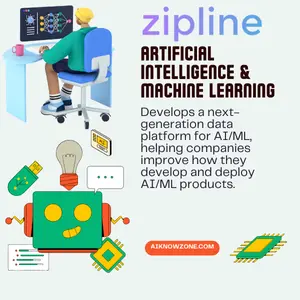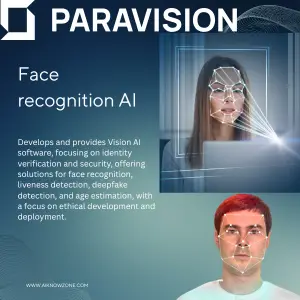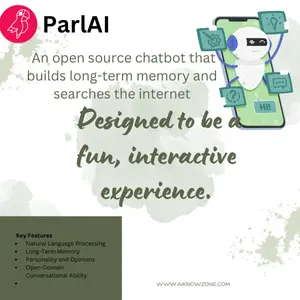Zipline AI
Find out how Zipline AI can accelerate your AI/ML development process and empower your team to focus on business problems, not infrastructure.
Description
Zipline AI Review: Is It the Right Tool for Your AI/ML Needs?
Okay, let’s dive into Zipline AI! From what I’ve gathered, it’s all about speeding up the process of building AI and Machine Learning (ML) products. Apparently, the team behind it also created Chronon, the open-source platform that powers AI/ML workloads at some pretty big companies like Airbnb and Stripe. So, they definitely know their stuff when it comes to AI infrastructure. The promise is simple: build AI & ML powered products in days instead of months. This is a big deal because traditionally, setting up the infrastructure for these projects can take a really long time, diverting attention away from actually solving business problems. They aim to free up practitioners to focus on what really matters – creating innovative solutions. It seems like a tool geared towards companies looking to streamline their AI development lifecycle and get their products to market faster. Essentially, if you’re tired of spending ages on infrastructure setup and want to get straight to building, Zipline AI might be worth a look. 🧐
Key Features and Benefits of Zipline AI
- Rapid Development: Speeds up the AI/ML product development lifecycle from months to days. This benefit saves valuable time and resources, enabling quicker deployment and iteration of AI solutions.
- Customizable ML Systems: Generates highly customizable and scalable ML systems, providing flexibility to adapt to specific business needs and evolving project requirements.
- Focus on Business Problems: Frees practitioners from infrastructure management, allowing them to concentrate on solving core business challenges with AI and ML technologies.
- Scalability: Designed to build and scale AI application for bigger projects and larger data needs, it ensures the AI system can handle increasing workloads.
How It Works (Simplified)
While I haven’t personally used Zipline AI, it seems like the basic workflow involves connecting it to your data sources, defining your desired AI/ML model, and then letting Zipline generate the necessary infrastructure and code. It’s designed to automate much of the heavy lifting typically involved in setting up an ML pipeline, such as data preparation, feature engineering, model training, and deployment. The platform likely provides a user-friendly interface or API to configure these settings, making it accessible to a range of users, from data scientists to machine learning engineers. ⚙️ The aim is to minimize the manual effort required, reducing the likelihood of errors and accelerating the time to market. The system handles scaling and optimization automatically, so teams can focus on improving the AI models themselves.
Real-World Use Cases for Zipline AI
- E-commerce Personalization: An e-commerce company can use Zipline AI to quickly build and deploy a personalized recommendation engine, improving customer engagement and driving sales. Imagine being able to deploy AI-driven product recommendations within weeks, rather than months!
- Fraud Detection: A financial institution can leverage Zipline AI to create a real-time fraud detection system, identifying and preventing fraudulent transactions more effectively than traditional methods. This swift implementation can save them significant amounts of money.
- Predictive Maintenance: A manufacturing firm can implement Zipline AI to build a predictive maintenance solution, forecasting equipment failures and minimizing downtime, leading to increased operational efficiency and reduced maintenance costs.
Pros of Zipline AI
- Significant reduction in AI/ML development time. ⏱️
- Highly customizable and scalable ML systems. 🎛️
- Allows practitioners to focus on solving business problems. 🤔
- Backed by the creators of Chronon, suggesting a strong technical foundation. 💪
Cons of using Zipline AI
- Specific pricing details are not readily available. 💰
- The level of customization and control for advanced users might be limited. ⚙️
Zipline AI Pricing
Unfortunately, pricing information for Zipline AI isn’t readily available on their website or easily found through other sources. You’ll likely need to contact their sales team directly to get a quote based on your specific needs and use case. This isn’t uncommon for enterprise-level AI infrastructure platforms, as pricing can vary depending on the scale of deployment, required features, and level of support. 🤷♂️
Conclusion
In conclusion, Zipline AI appears to be a promising platform for organizations looking to accelerate their AI/ML development process. If you’re a company struggling with the complexities and time investment of building AI infrastructure from scratch, Zipline AI could be a valuable solution. It’s particularly well-suited for teams that want to focus on solving business problems with AI, rather than spending the majority of their time on infrastructure management. However, it’s important to reach out to them for pricing details and to ensure that the platform offers the level of customization and control you need for your specific use cases. 👍






Reviews
There are no reviews yet.